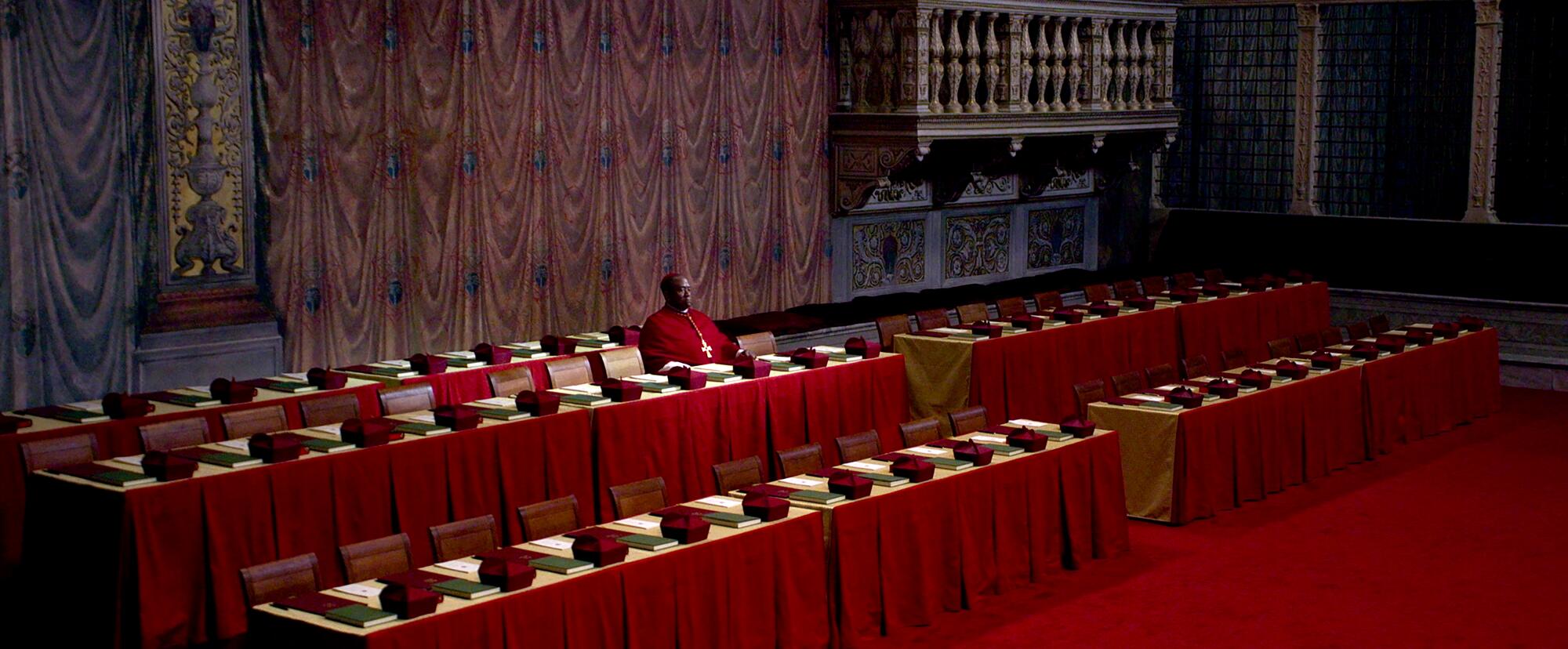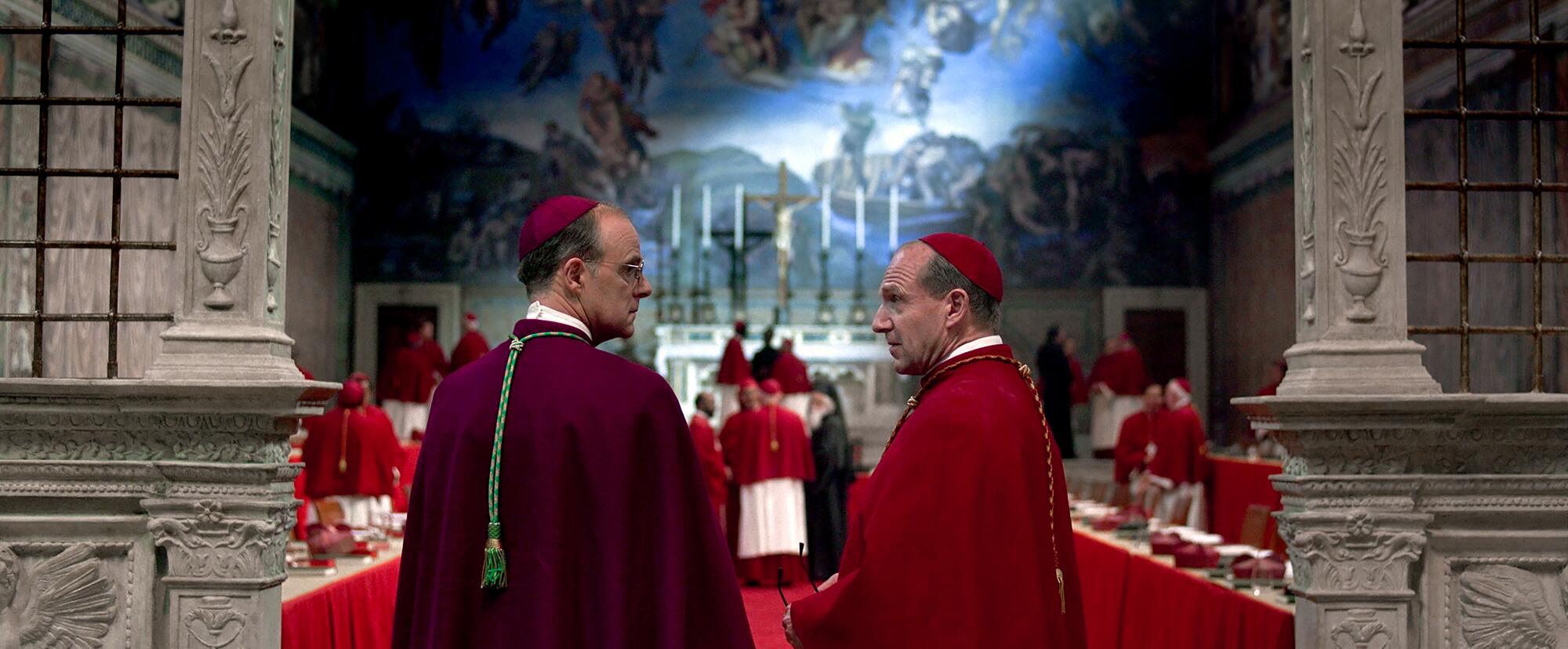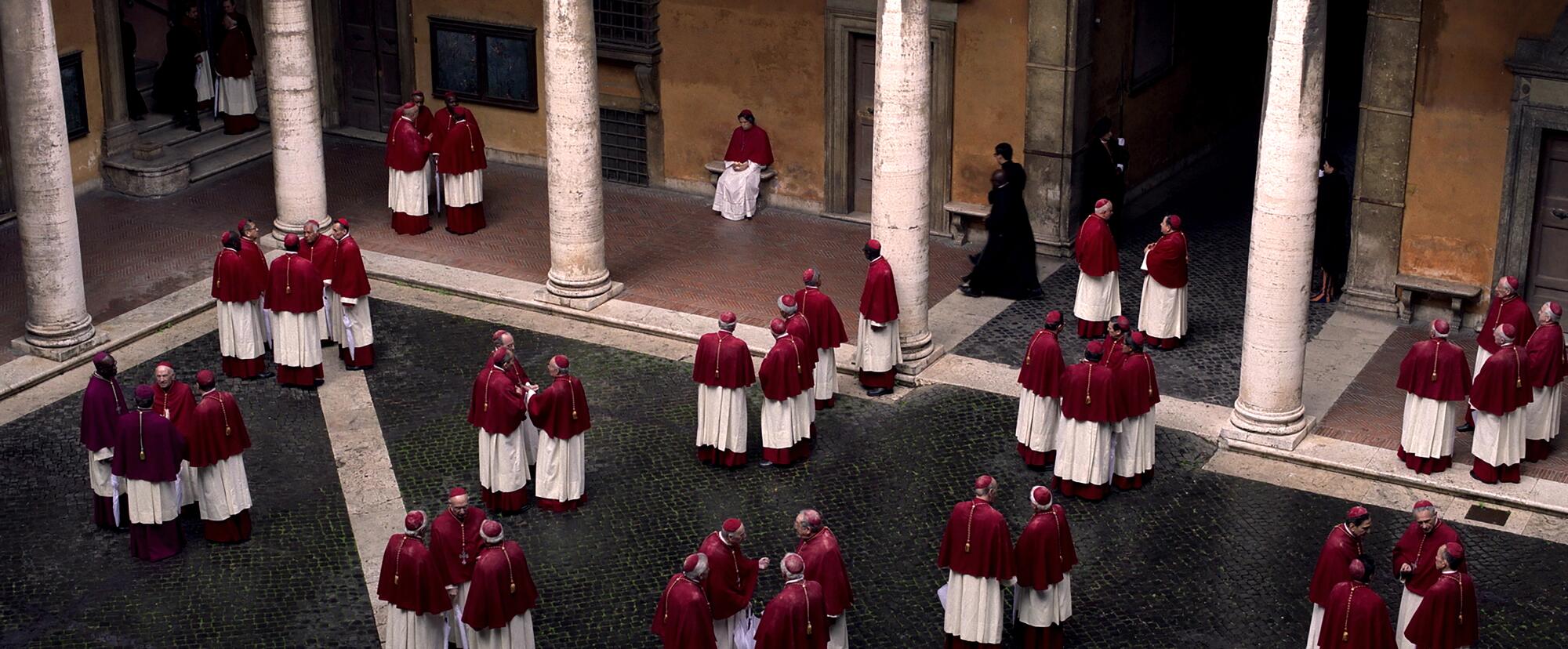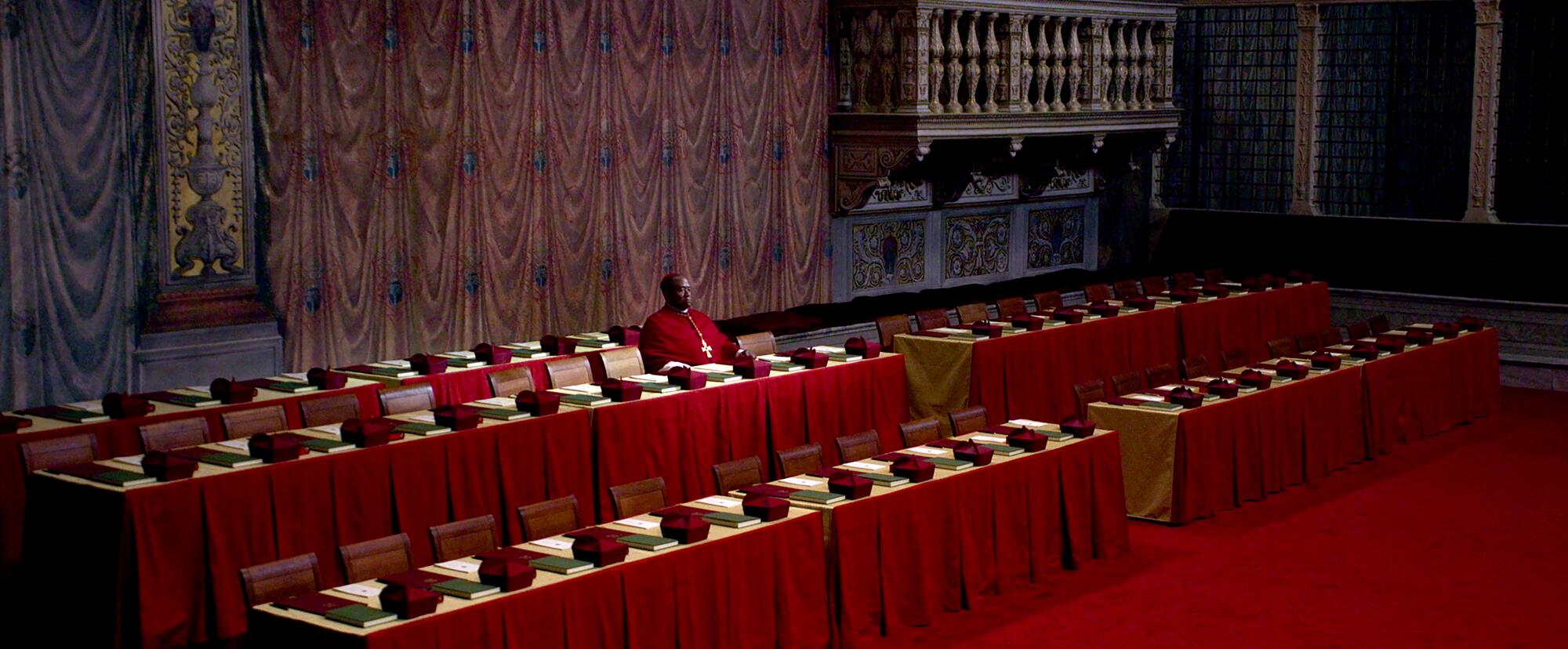Although “Conclave” takes place in Vatican City, director Edward Berger and production designer Suzie Davies didn’t want to get overly caught up in the minutiae of the actual location. The film, about the fictional selection of the next pope, needed to feel like a thrilling drama, not a documentary.
“You research it, you acknowledge it, and then it inspires and informs your design or your storytelling,” Davies says. “There’s lots of supposed traditions about a conclave. But when you look into that, it goes back hundreds of years, and it’s changed over hundreds of years. Because we were being ambiguous about when this conclave is set, we decided that maybe they’ve changed a tradition or two by now.”

Voting for the next pope takes place in the Sistine Chapel, built from an existing set found in storage at Italy’s famed Cinecittà Studios.
(Focus Features)
“Conclave” technically marks Davies’ second collaboration with Berger. During the pandemic shutdown, the pair spent two months prepping an adaptation of “The 39 Steps,” but that production never went forward. Davies, who was Oscar-nominated for Mike Leigh’s 2014 film “Mr. Turner,” jumped at the opportunity to work with Berger again on “Conclave,” this time for six months in Rome.
“The beauty of this sort of job is that I get the opportunity to go live in these other countries and create other worlds and experience being a designer in a different environment,” Davies says. “Although maybe I was naively excited about the prospect of doing it, because it was a very challenging project.”
Davies joined “Conclave” while shooting Emerald Fennell’s “Saltburn” and began scouting locations in Rome during the summer of 2022, as she was still in the middle of that production. The big challenge was that photography and filming — even by tourists — is not allowed inside the Vatican and the Sistine Chapel. The team had access to old footage and images, as well as Catholic advisors and experts who could provide information, but everything had to be created, either on a stage at Cinecittà Studios or on location. Because so much of the story takes place behind the scenes at the Vatican, Davies felt she had the liberty to imagine those spaces.
“Edward and I were interested in having a balanced juxtaposition of what we think we know about the Vatican and what we don’t know about the Vatican,” she notes. “And it was up to us to come up with that and to dramatize that element of the environment that the cardinals live in. It was really fun to make it a bit more thriller-esque and underground, and more unnerving and unknown.”

Brian F. O’Byrne and Ralph Fiennes play cardinals discussing the vote for a new pope in the Sistine Chapel, a set built at Cinecitta Studios.
(Focus Features)
By chance, there was an existing Sistine Chapel set in storage at Cinecittà Studios. Davies and her team pulled it and had it restored, setting it up in a slightly different way than it was originally imagined. It took nearly 10 weeks to put together and another eight weeks to build the additional Casa Santa Marta sets, which included a long hallway and numerous rooms for the cardinals. Although the carpets in the real Sistine Chapel are beige, Davies installed brilliant red carpeting to make the room “more flamboyant and colorful.” The voting rituals, including hanging the voting papers on a thread, were precisely replicated and based largely on historical fact to showcase the intricate closeup detail.
The dormitory at Casa Santa Marta, where the cardinals are sequestered, is purposefully more modern than the Sistine Chapel and the other Vatican rooms. Davies wanted to balance the traditional ornate Rome with Brutalist and Fascist architecture, particularly as no one actually knows what the Casa Santa Marta looks like. She took inspiration from Italian architect Carlo Scarpa and gave the space a prison-like atmosphere to emphasize how the cardinals are locked in during the conclave.
“I wanted to play with opposites in the film, with dark and light, with truth and honesty,” Davies says. “The cardinals are voting for the free world, but are they free? I was playing with all those elements and making the colors a bit more cool and a bit more blue, as opposed to the warm reds and golds of the chapel. Then we gave a backstory to the rooms. Some of them were different shapes, and the idea was: Who would get the better room? Who was on the ground floor? And they had these modern accouterments, like minifridges and coffee makers, because the cardinals are normal people — they use the bathroom and make a coffee like us all.”
Dozens of cardinals

The Ospedale Santo Spirito, a hospital in Rome, became the Vatican’s courtyard in “Conclave.” The rest of the Vatican is a composite of nearly 50 locations and a film studio.
(Focus Features)
That level of detail was even more essential in Davies’ next project, Leigh’s “Hard Truths,” which shot in real locations in London. Davies calls it “the exact opposite” of “Conclave,” in part because she was reunited with her usual team, and in part because the production was so small. “We were able to find our characters’ world, which is how Mike works,” she says. “You’re absolutely part of the adventure of finding the story with him. We couldn’t have afforded to use a studio, but also Mike prefers the idiosyncrasies of location work. Sometimes it’s better to be in the real world.”
Davies brought that sensibility to “Conclave” as well. The rest of the Vatican is a composite of nearly 50 locations, from a military canteen used for the Casa Santa Marta dining room to the Ospedale Santo Spirito, which became the Vatican’s courtyard, to the famous Palazzo Barberini, where Davies installed a 15-foot crucifix. Many of the locations had to be cleaned and augmented, including with a real X-ray machine and actual turtles in the gardens. The team even built an elevator that traveled to several sets to ensure they were visually interconnected. Davies says the aesthetic precision of the film is down to Berger’s careful planning.
“We storyboarded a lot of the bigger sequences, so we knew what we had to achieve,” she recalls. “In some respects that can feel a little restrictive, but Edward does that in order for him to then free-form on the day. His preparation allows for that. It felt like a very creative environment. I’m proud to achieve what we did and to put our own stamp on it.”
